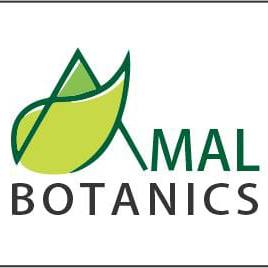
Moringa Cultivation and Sustainability
Share
Moringa Cultivation and Sustainability
Moringa, often hailed as the “Miracle Tree,” has gained immense popularity for its nutritional value, versatility, and environmental benefits. As global demand for this superfood rises, understanding sustainable cultivation methods becomes increasingly important. In this blog, we will explore how Moringa is cultivated, the environmental impact of its farming, and the sustainable practices that ensure its long-term viability.
How is Moringa Cultivated? A Step-by-Step Guide
Moringa cultivation is relatively straightforward, thanks to its resilience and adaptability to various climates. Here is a step-by-step guide:
1. Selecting the Right Variety
Moringa oleifera is the most commonly cultivated species. Choose a variety suited to your region’s climate and soil conditions.
2. Preparing the Soil
- Moringa thrives in well-drained, loamy soil with a pH between 6.0 and 7.5.
- Clear the land of weeds and debris.
- Enrich the soil with organic compost to enhance fertility.
3. Planting Methods
- Seed Planting: Directly sow seeds 1-2 cm deep, spacing them about 1 meter apart for leaf production or 3 meters apart for pod production.
- Cuttings: Use healthy branches from mature Moringa trees, planting them 50-60 cm deep.
4. Watering
- Moringa is drought-resistant but requires consistent watering during the initial growth phase.
- Avoid waterlogging, as it can damage the roots.
5. Fertilization
- Use organic fertilizers like compost or manure to promote healthy growth.
- Avoid synthetic chemicals that may harm soil health over time.
6. Pruning and Maintenance
- Prune regularly to encourage bushy growth and maximize leaf yield.
- Remove dead or diseased branches to maintain plant health.
7. Harvesting
- Leaves: Begin harvesting as early as 60 days after planting.
- Pods: Harvest pods when they are green and tender for culinary use or when mature for seed extraction.
- Prune regularly to encourage bushy growth and maximize leaf yield.
- Remove dead or diseased branches to maintain plant health.
By following these steps, farmers can achieve a bountiful Moringa harvest while maintaining healthy plants.
The Environmental Impact of Moringa Farming
Moringa farming has a significant positive environmental impact compared to other crops. Here’s why:
1. Carbon Sequestration
- Moringa trees absorb large amounts of carbon dioxide, helping mitigate climate change.
- Their fast growth rate enhances their carbon-capturing capabilities.
2. Soil Health Improvement
- The deep roots of Moringa trees prevent soil erosion.
- Fallen leaves enrich the soil with organic matter, promoting fertility.
3. Water Efficiency
- Moringa is a drought-resistant crop that requires minimal water.
- Its cultivation helps conserve water resources, especially in arid regions.
4. Biodiversity Support
- Moringa plantations can serve as habitats for various pollinators and other beneficial organisms.
- Mixed farming with Moringa supports agro biodiversity.
Despite these benefits, unsustainable practices can offset its environmental advantages, making sustainability a critical focus.
How to Incorporate Moringa Into Your Diet
- Moringa Powder: Add a teaspoon to smoothies, juices, or soups for an instant nutrient boost.
- Fresh Leaves: Use in salads, stir-fries, or as a garnish for various dishes.
- Moringa Tea: Brew dried leaves to create a refreshing and antioxidant-rich herbal tea.
- Moringa Oil: Use in cooking or as a dressing for added nutritional benefits.
Sustainable Practices in Moringa Production
To maximize the benefits of Moringa farming while minimizing its ecological footprint, adopting sustainable practices is essential. Here are some key strategies:
1. Agroforestry Systems
- Integrate Moringa trees with other crops to enhance biodiversity and optimize land use.
- Agroforestry reduces pest infestations and improves soil fertility naturally.
2. Organic Farming
- Use organic fertilizers and natural pest control methods to avoid chemical contamination.
- Promote composting and mulching to maintain soil health.
3. Water Management
- Employ drip irrigation systems to minimize water wastage.
- Harvest rainwater to ensure a reliable water source.
5. Minimal Tillage Practices
- Reduce soil disturbance to maintain its structure and microbial diversity.
- Employ cover crops to protect the soil between Moringa planting cycles.
6. Community Engagement
- Train local farmers in sustainable methods.
- Foster cooperative farming models to share resources and knowledge.
By implementing these practices, Moringa cultivation can remain a sustainable venture that benefits both people and the planet.
Conclusion
Moringa cultivation presents an incredible opportunity to address global nutritional needs while promoting environmental sustainability. By following best practices in planting, maintaining soil and water health, and integrating agroecological methods, farmers can maximize yields and reduce their environmental impact.
Whether you are a small-scale farmer or an agro-industrial entrepreneur, embracing sustainable Moringa farming practices is a step toward a greener, healthier future.
Do you have experiences with Moringa farming or insights into sustainable agriculture? Share your thoughts in the comments below—we’d love to hear from you!
References
- Foidl, N., Makkar, H. P. S., & Becker, K. (2001). The potential of Moringa oleifera for agricultural and industrial uses. The Miracle Tree: The Multiple Attributes of Moringa, 45-76.
- Fuglie, L. J. (2001). Combating malnutrition with Moringa. The Miracle Tree: The Multiple Attributes of Moringa, 117-136.
- Rockwood, J. L., Anderson, B. G., & Casamatta, D. A. (2013). Potential uses of Moringa oleifera and an examination of antibiotic efficacy conferred by Moringa extracts. International Journal of Phytotherapy and Phytopharmacology, 21(7), 801-809.
- Morton, J. F. (1991). The horseradish tree, Moringa pterygosperma (Moringaceae)—A boon to arid lands? Economic Botany, 45(3), 318-333.
- Anwar, F., Latif, S., Ashraf, M., & Gilani, A. H. (2007). Moringa oleifera: A food plant with multiple medicinal uses. Phytotherapy Research: An International Journal Devoted to Pharmacological and Toxicological Evaluation of Natural Product Derivatives, 21(1), 17-25.
